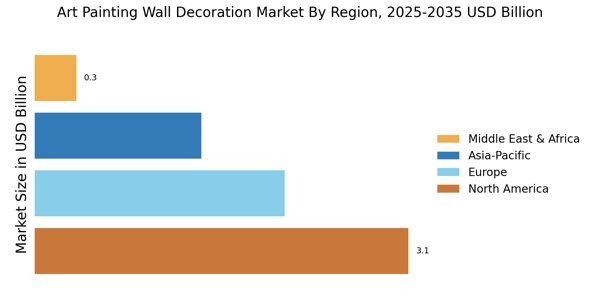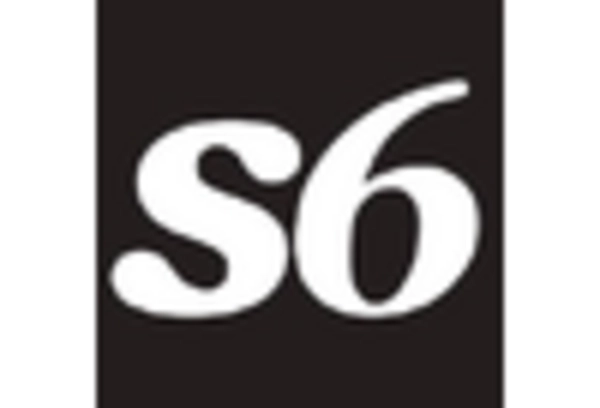Rising Disposable Income
The Art Painting Wall Decoration Market appears to be positively influenced by the increasing disposable income among consumers. As individuals experience a rise in their financial capabilities, they tend to allocate more funds towards home decor, including art paintings. This trend is particularly evident in emerging economies, where a burgeoning middle class is eager to invest in aesthetic enhancements for their living spaces. According to recent data, households with higher disposable income are more likely to purchase art pieces, thereby driving demand in the Art Painting Wall Decoration Market. This shift in consumer behavior suggests a potential for sustained growth, as more individuals seek to personalize their environments with unique art pieces that reflect their tastes and lifestyles.
Increased Online Art Sales
The Art Painting Wall Decoration Market is witnessing a significant transformation due to the rise of online art sales platforms. As consumers become more comfortable with digital transactions, the accessibility of art has expanded dramatically. Online galleries and marketplaces provide a platform for artists to reach a broader audience, thereby increasing sales potential. Data suggests that online art sales have seen a substantial increase, with many consumers preferring the convenience of browsing and purchasing art from home. This shift not only benefits consumers but also allows artists to showcase their work to a global audience, enhancing the overall growth of the Art Painting Wall Decoration Market. The trend indicates a promising future for online art commerce, as it continues to evolve and attract new buyers.
Cultural and Artistic Movements
The Art Painting Wall Decoration Market is significantly influenced by various cultural and artistic movements that resonate with consumers. As societies evolve, so do their artistic expressions, which often reflect contemporary issues, historical narratives, and cultural identities. This connection between art and culture drives consumer interest, as individuals seek to adorn their spaces with pieces that resonate on a personal or societal level. Market data indicates that art reflecting current cultural themes tends to attract more attention and sales. This suggests that the Art Painting Wall Decoration Market must remain responsive to cultural shifts, as they present opportunities for artists and retailers to engage with consumers in meaningful ways, ultimately fostering growth in the sector.
Growing Interest in Home Aesthetics
The Art Painting Wall Decoration Market is experiencing a surge in interest as consumers increasingly prioritize home aesthetics. This trend is fueled by the rise of social media platforms, where individuals showcase their living spaces, prompting others to enhance their own environments. The desire for visually appealing homes has led to a greater demand for art paintings, as they serve as focal points in interior design. Market data indicates that the home decor segment, particularly art, is projected to grow significantly, with consumers willing to invest in quality pieces that elevate their home ambiance. This growing interest in aesthetics not only drives sales but also encourages artists and manufacturers to innovate and diversify their offerings in the Art Painting Wall Decoration Market.
Influence of Interior Design Trends
The Art Painting Wall Decoration Market is notably shaped by evolving interior design trends. As design preferences shift towards minimalism, bohemian styles, and eclectic mixes, the demand for specific types of art paintings adapts accordingly. Designers often incorporate art as a critical element in their projects, influencing consumer purchases. Recent market analysis suggests that art pieces that align with current design trends are more likely to be favored by consumers, thereby driving sales in the Art Painting Wall Decoration Market. This dynamic interplay between art and design trends indicates a responsive market, where artists and suppliers must remain attuned to changing consumer preferences to capitalize on emerging opportunities.


















Leave a Comment